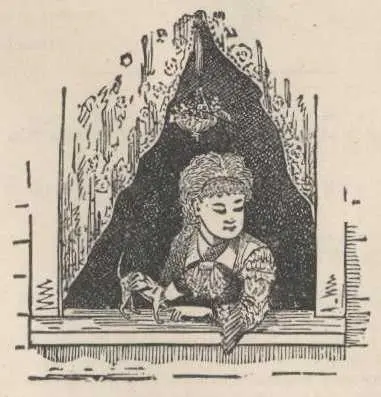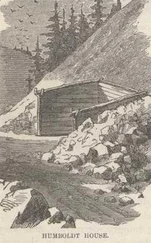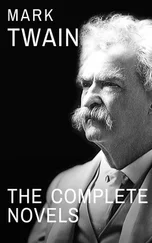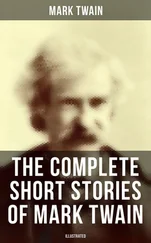Mark Twain - A Tramp Abroad
Здесь есть возможность читать онлайн «Mark Twain - A Tramp Abroad» весь текст электронной книги совершенно бесплатно (целиком полную версию без сокращений). В некоторых случаях можно слушать аудио, скачать через торрент в формате fb2 и присутствует краткое содержание. Жанр: Классическая проза, Юмористическая проза, на английском языке. Описание произведения, (предисловие) а так же отзывы посетителей доступны на портале библиотеки ЛибКат.
- Название:A Tramp Abroad
- Автор:
- Жанр:
- Год:неизвестен
- ISBN:нет данных
- Рейтинг книги:5 / 5. Голосов: 1
-
Избранное:Добавить в избранное
- Отзывы:
-
Ваша оценка:
- 100
- 1
- 2
- 3
- 4
- 5
A Tramp Abroad: краткое содержание, описание и аннотация
Предлагаем к чтению аннотацию, описание, краткое содержание или предисловие (зависит от того, что написал сам автор книги «A Tramp Abroad»). Если вы не нашли необходимую информацию о книге — напишите в комментариях, мы постараемся отыскать её.
A Tramp Abroad — читать онлайн бесплатно полную книгу (весь текст) целиком
Ниже представлен текст книги, разбитый по страницам. Система сохранения места последней прочитанной страницы, позволяет с удобством читать онлайн бесплатно книгу «A Tramp Abroad», без необходимости каждый раз заново искать на чём Вы остановились. Поставьте закладку, и сможете в любой момент перейти на страницу, на которой закончили чтение.
Интервал:
Закладка:

Descriptions of such a work as this must necessarily be imperfect, yet they are of value. The top of the Trunk is arched; the arch is a perfect half-circle, in the Roman style of architecture, for in the then rapid decadence of Greek art, the rising influence of Rome was already beginning to be felt in the art of the Republic. The Trunk is bound or bordered with leather all around where the lid joins the main body. Many critics consider this leather too cold in tone; but I consider this its highest merit, since it was evidently made so to emphasize by contrast the impassioned fervor of the hasp. The highlights in this part of the work are cleverly managed, the MOTIF is admirably subordinated to the ground tints, and the technique is very fine. The brass nail-heads are in the purest style of the early Renaissance. The strokes, here, are very firm and bold—every nail-head is a portrait. The handle on the end of the Trunk has evidently been retouched—I think, with a piece of chalk—but one can still see the inspiration of the Old Master in the tranquil, almost too tranquil, hang of it. The hair of this Trunk is REAL hair—so to speak—white in patches, brown in patches. The details are finely worked out; the repose proper to hair in a recumbent and inactive attitude is charmingly expressed. There is a feeling about this part of the work which lifts it to the highest altitudes of art; the sense of sordid realism vanishes away—one recognizes that there is SOUL here.
View this Trunk as you will, it is a gem, it is a marvel, it is a miracle. Some of the effects are very daring, approaching even to the boldest flights of the rococo, the sirocco, and the Byzantine schools—yet the master's hand never falters—it moves on, calm, majestic, confident—and, with that art which conceals art, it finally casts over the TOUT ENSEMBLE, by mysterious methods of its own, a subtle something which refines, subdues, etherealizes the arid components and endures them with the deep charm and gracious witchery of poesy.
Among the art-treasures of Europe there are pictures which approach the Hair Trunk—there are two which may be said to equal it, possibly—but there is none that surpasses it. So perfect is the Hair Trunk that it moves even persons who ordinarily have no feeling for art. When an Erie baggagemaster saw it two years ago, he could hardly keep from checking it; and once when a customs inspector was brought into its presence, he gazed upon it in silent rapture for some moments, then slowly and unconsciously placed one hand behind him with the palm uppermost, and got out his chalk with the other. These facts speak for themselves.

CHAPTER XLIX
Hanged with a Golden Rope
In Venice—St Mark's Cathedral—Discovery of an Antique—The Riches of St Mark's—A Church Robber—Trusting Secrets to a Friend —The Robber Hanged—A Private Dinner—European Food
One lingers about the Cathedral a good deal, in Venice. There is a strong fascination about it—partly because it is so old, and partly because it is so ugly. Too many of the world's famous buildings fail of one chief virtue—harmony; they are made up of a methodless mixture of the ugly and the beautiful; this is bad; it is confusing, it is unrestful. One has a sense of uneasiness, of distress, without knowing why. But one is calm before St. Mark's, one is calm within it, one would be calm on top of it, calm in the cellar; for its details are masterfully ugly, no misplaced and impertinent beauties are intruded anywhere; and the consequent result is a grand harmonious whole, of soothing, entrancing, tranquilizing, soul-satisfying ugliness. One's admiration of a perfect thing always grows, never declines; and this is the surest evidence to him that it IS perfect. St. Mark's is perfect. To me it soon grew to be so nobly, so augustly ugly, that it was difficult to stay away from it, even for a little while. Every time its squat domes disappeared from my view, I had a despondent feeling; whenever they reappeared, I felt an honest rapture—I have not known any happier hours than those I daily spent in front of Florian's, looking across the Great Square at it. Propped on its long row of low thick-legged columns, its back knobbed with domes, it seemed like a vast warty bug taking a meditative walk.
St. Mark's is not the oldest building in the world, of course, but it seems the oldest, and looks the oldest—especially inside.
When the ancient mosaics in its walls become damaged, they are repaired but not altered; the grotesque old pattern is preserved. Antiquity has a charm of its own, and to smarten it up would only damage it. One day I was sitting on a red marble bench in the vestibule looking up at an ancient piece of apprentice-work, in mosaic, illustrative of the command to "multiply and replenish the earth." The Cathedral itself had seemed very old; but this picture was illustrating a period in history which made the building seem young by comparison. But I presently found an antique which was older than either the battered Cathedral or the date assigned to the piece of history; it was a spiral-shaped fossil as large as the crown of a hat; it was embedded in the marble bench, and had been sat upon by tourists until it was worn smooth. Contrasted with the inconceivable antiquity of this modest fossil, those other things were flippantly modern—jejune—mere matters of day-before-yesterday. The sense of the oldness of the Cathedral vanished away under the influence of this truly venerable presence.
St. Mark's is monumental; it is an imperishable remembrancer of the profound and simple piety of the Middle Ages. Whoever could ravish a column from a pagan temple, did it and contributed his swag to this Christian one. So this fane is upheld by several hundred acquisitions procured in that peculiar way. In our day it would be immoral to go on the highway to get bricks for a church, but it was no sin in the old times. St. Mark's was itself the victim of a curious robbery once. The thing is set down in the history of Venice, but it might be smuggled into the Arabian Nights and not seem out of place there:
Nearly four hundred and fifty years ago, a Candian named Stammato, in the suite of a prince of the house of Este, was allowed to view the riches of St. Mark's. His sinful eye was dazzled and he hid himself behind an altar, with an evil purpose in his heart, but a priest discovered him and turned him out. Afterward he got in again—by false keys, this time. He went there, night after night, and worked hard and patiently, all alone, overcoming difficulty after difficulty with his toil, and at last succeeded in removing a great brick of the marble paneling which walled the lower part of the treasury; this block he fixed so that he could take it out and put it in at will. After that, for weeks, he spent all his midnights in his magnificent mine, inspecting it in security, gloating over its marvels at his leisure, and always slipping back to his obscure lodgings before dawn, with a duke's ransom under his cloak. He did not need to grab, haphazard, and run—there was no hurry. He could make deliberate and well-considered selections; he could consult his esthetic tastes. One comprehends how undisturbed he was, and how safe from any danger of interruption, when it is stated that he even carried off a unicorn's horn—a mere curiosity—which would not pass through the egress entire, but had to be sawn in two—a bit of work which cost him hours of tedious labor. He continued to store up his treasures at home until his occupation lost the charm of novelty and became monotonous; then he ceased from it, contented. Well he might be; for his collection, raised to modern values, represented nearly fifty million dollars!
Читать дальшеИнтервал:
Закладка:
Похожие книги на «A Tramp Abroad»
Представляем Вашему вниманию похожие книги на «A Tramp Abroad» списком для выбора. Мы отобрали схожую по названию и смыслу литературу в надежде предоставить читателям больше вариантов отыскать новые, интересные, ещё непрочитанные произведения.
Обсуждение, отзывы о книге «A Tramp Abroad» и просто собственные мнения читателей. Оставьте ваши комментарии, напишите, что Вы думаете о произведении, его смысле или главных героях. Укажите что конкретно понравилось, а что нет, и почему Вы так считаете.












